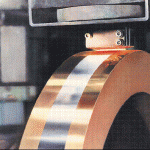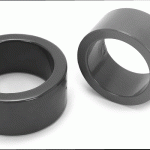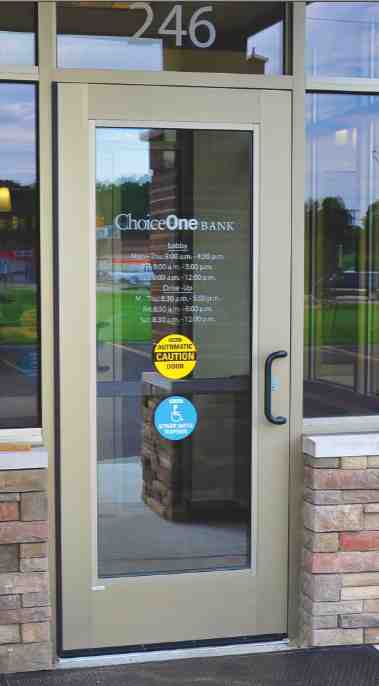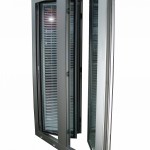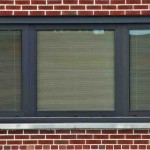08.12.10 Association News
AAMA publishes update of industry-recognized voluntary specifications and test methods for sealants
The American Architectural Manufacturers Association (AAMA) has published a compilation of standards, specifications and test methods for determining the performance of compounds, sealants and tapes used in the manufacture and installation of windows, sliding glass doors and curtain walls. AAMA leads the industry in providing guidance for the selection and application of sealants, a major contribution being published sealant test methods and specifications,” says Ken Brenden, AAMA technical services manager. “Currently, AAMA 800-08– sections of which are referenced in ASTM E2112-07, Standard Practice for Installation of Exterior Windows, Doors and Skylights, and thus form the basis of the InstallationMasters™ program, is a document under constant review and update to reflect new technologies and new performance requirements.”
Originally released in 1986, AAMA 800, Voluntary Specifications and Test Methods for Sealants, has been revised and updated. The 2010 version of the document includes the following product specifications:
* Back bedding compounds
* Back bedding mastic glazing tapes
* Back bedding hot applied sealants
* Narrow joint seam sealers
* Exterior perimeter sealing compounds
* Non-drying sealants
* Expanded cellular glazing tapes
Sub-sections of AAMA 800-10 cover different classifications of back-bedding compounds and hot applied sealants, such as Type I and Type II compounds, both of which are intended to remain ductile and permit moderate movement without loss of bond. Type I is recommended for intermittent water contact, while Type II is recommended for extended water contact, but not continuous immersion. Group A and Group C back bedding compounds that are additionally intended to bond or adhere the glass to the substrate are covered in a new section. Both compounds cure relatively hard and stiff yet also permit limited movement. Group A sealants demonstrate peel adhesive failure, while Group C demonstrates predominately cohesive failure.
Other subsections define classifications of back bedding mastic type glazing tapes, which are 804.3 for tapes used in less severe back bedding and drop-in glazing applications such as residential and light commercial fenestrations, 806.3 for those used in high performance commercial fenestrations in which the tape is subjected to continuous pressure exerted from gaskets, and 807.3 for tapes used in commercial fenestrations in which the tape is not subjected to continuous pressure.
Performance requirements specified as applicable to the type of sealant or tape include visual screening, hardness, thin film integrity, peel and/or tensile adhesion, yield strength, compression/deflection and/or compression set, lap shear strength with exposure, slump, sag, vehicle migration, low temperature flexibility, staining (will not stain the substrate beyond the applied bond line) and water resistance.
Section 2 of AAMA 800-10 provides details on the various test methods indicated for determining compliance with these performance requirements and includes elaborations for each test concerning, as applicable, the materials required, specimen and/or substrate preparation, specimen conditioning and/or cure and exposure, procedural details, calculations and/or evaluation, and results reporting. The section is liberally illustrated with photos and diagrams of the test procedures and the foundational ASTM methods are referenced.
The final section, Laboratory Test Method Notes, offers tips for sealant sampling, optional cure/pre-cure/pre-conditioning methods, substrate preparation, dealing with gunnable sealants with spacer beads and mastic type tapes with spacer shims, test methods to determine compatibility with laminated glass and plastic glazing beads or setting blocks and test equipment alternatives and sources.
“The latest revision to the document features clarification of wording and updating of ASTM standard references to cite current editions, as well as including of an optional test for Type II Narrow Joint Seam Sealants,” says Rich Rinka (Momentive Performance Materials) chair of the AAMA 800 Maintenance Task Group, who revised the AAMA 800 document. “The test reduces the amount of material tested in the sag test, allowing for more accurate measurement of the flow of material. A new section on testing for slump and associated illustrative figures was also added.”
Voluntary Specifications and Test Methods for Sealants is available to members at a cost of $10 for download, $20 for paper copy and $25 for CD. Non-members may purchase the document at a cost of $25 for download, $50 for paper copy and $55 for CD. It is also included in AAMA’s Volume Set 1 (VOL-1) which is now available on CD at a savings of over 50% of the individual price of each document. To order AAMA 800-10, visit the AAMA Online Publication Store.
More information about AAMA and its activities can be found via the AAMA Media Relations page or at the newly updated website.
Filed under: AAMA, ASSOCIATION NEWS, Products | Comments Off on 08.12.10 Association News
